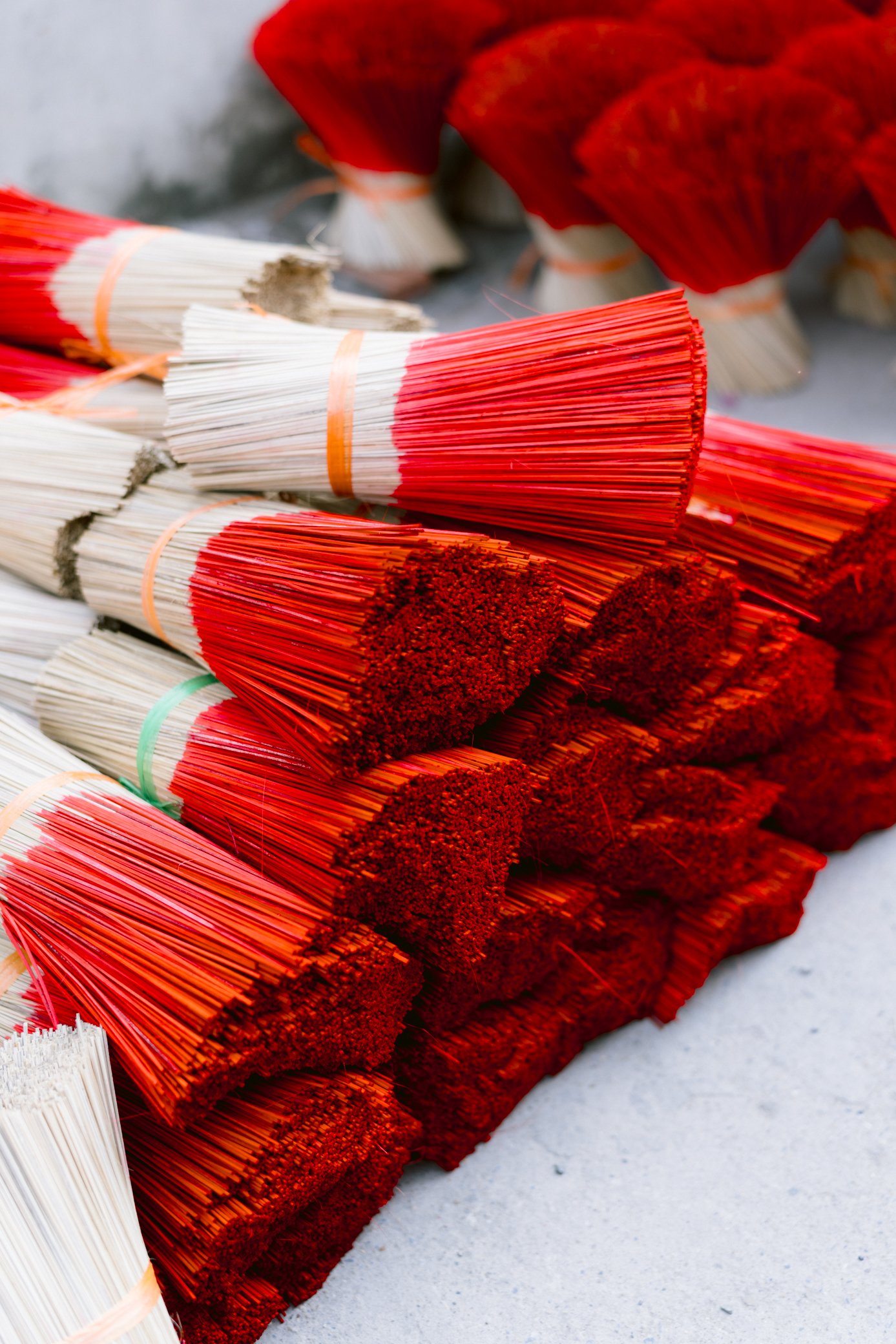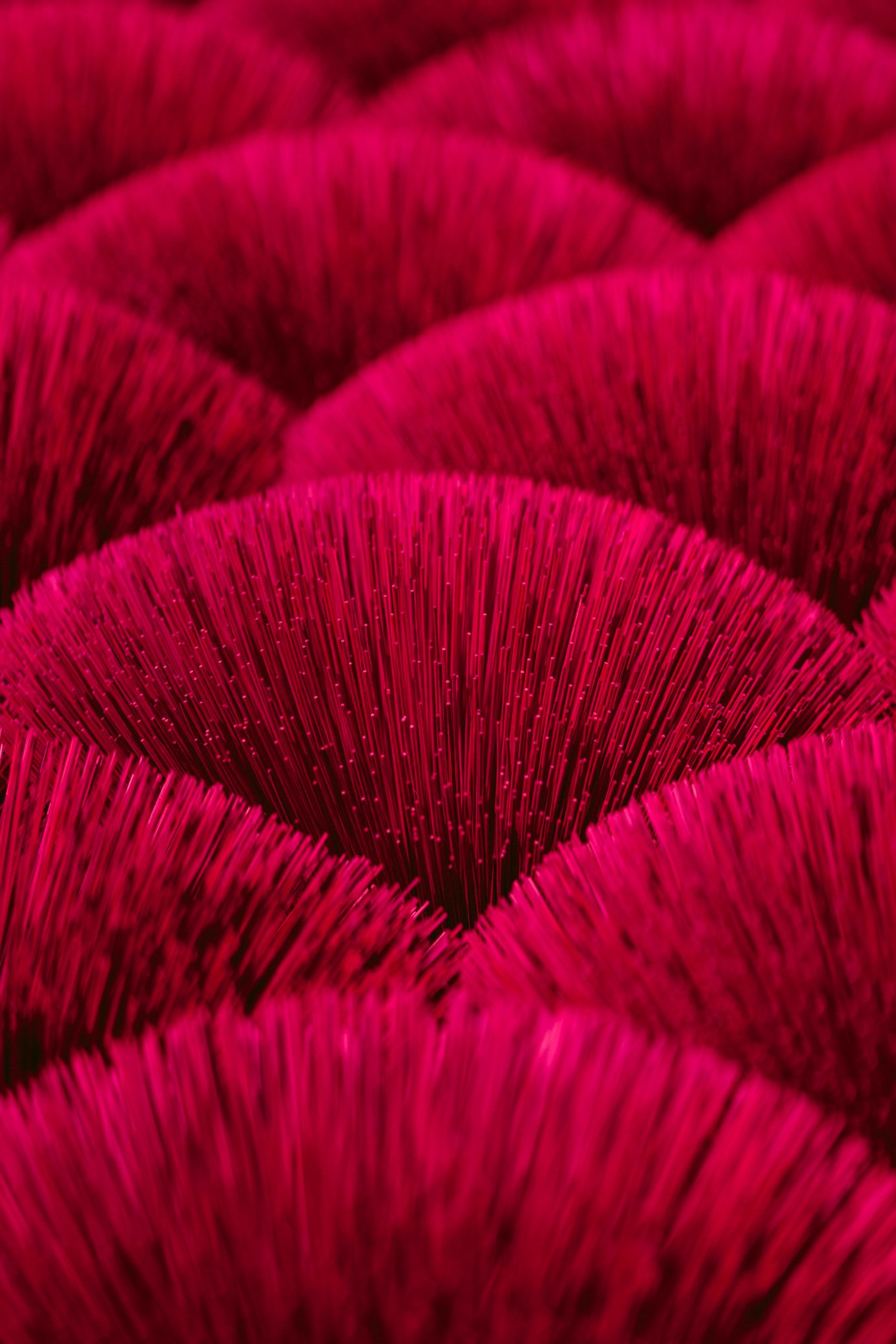Quang Phu Cau Incense Village
Located about 36 km from Vietnam’s capital city of Hanoi is a century-old village called Quang Phu Cau, famous for its production of incense.
Worker at Quang Phu Cau laying out incense to dry
I entered the small, remote village, with a roller suitcase in hand, camera gear on my back, and the sun blazing down on my pale skin. I made my way along the uneven road, wheeling my suitcase through the dust-saturated air, eager to see what awaited me.
I might have looked lost or crazy, wheeling my worn luggage through the streets while balancing two cameras in hand. Or, I might have been a familiar sight, in the place that draws tourists and photographers from around the world who want to experience the unique craft of incense-making, local culture, and picturesque scenery.
Sawdust inundated my senses as I strolled by a small mill of workers using machines to cut bamboo into sticks. Before being cut into smaller pieces, the bamboo is stored in chemicals for a few months to prevent it from becoming a weevil snack. Though some makers opt for the efficiency of machines for chopping bamboo, there is still a demand for workers who split the bamboo by hand.
Not too long after I started walking through the village, I stopped to photograph a lovely couple cutting bamboo sticks. We had a friendly interaction, communicating through gestures and smiles.
From there, I continued meandering the alleyways, stopping to admire the workers busily going about their day. I was greeted with big smiles and waves, and children eagerly coming up close to say hello and ask for my name. It was amazing to be reminded of the doors a simple smile can open.
The incense is dyed by hand then laid out in the sun to dry
The village produces approximately 50 tons of incense each month, which is consumed in Vietnam, India, China, Malaysia and many other countries. The craft generates jobs and income for about 70% of the village households. Workers make VND 5-6 million (USD $215-$258) each month, more experienced workers can make VND 6-8 million (USD $258-$345). This is the average salary in Vietnam and enables locals to afford big houses and maintain public infrastructure.
Walking the alleyways you will find areas of incense drying
According to a documentary by Business Insider, until 2019, the village of Quang Phu Cau exported roughly 300 tons of incense each year to India. In 2019, India placed a partial ban on incense imported from Vietnam in an attempt to bolster their own domestic production. This gap meant the small village had to get creative. One man, Nguyěn Thi, led the charge in creating a co-op for incense production. The co-op was registered as a legitimate business in Vietnam.
Workers in Quang Phu Cau arranging incense to dry
To make the incense sticks more appealing to Vietnamese people, the incense sticks were lengthened, with bright color and scent added. The colors you will most often see in photos online or on a stroll through the village are pink and red. The color pink represents the country's flower, the lotus, and the color red represents the Vietnam flag.
If you are planning a trip to any of the thousands of craft villages located throughout Vietnam, I encourage you to appreciate the workers who are keeping the crafts alive. Be respectful of their time, ask before you take photos, and more than anything, be friendly. The kind locals are working very hard under those hats in the unrelenting heat to support their families.
Villagers stripping bamboo
Planning a trip to Hanoi? Here are some more tips for visiting the incense village:
1) Many places online will offer tours from Hanoi. This may be the best way to secure transportation to and from the village and have a guided experience.
2) Book a private car to and from the village. You may not be able to secure a ride back since the village is pretty remote. I opted to visit the village alone because I wanted autonomy and privacy when I was photographing, and I did not want to be held to a specific timeline.
3) Go on a sunny day, and bring water, a hat and sunscreen.
4) Get there early, I would say no later than 9 AM. They will be beginning to lay the incense out to dry by then, and the temperature outside may be more tolerable. An early start also gives you more time to explore the village.
5) Have a backup plan in case, like me, you have poor cell phone reception during your visit.
6) Smile and greet the locals, we all are human and crave interaction.
7) Bring cash, the entrance fee the two main incense drying areas is 50,000 VND or $2 USD. I also tipped the workers who posed for photos.


















Article edited by Caitlin Ward.








